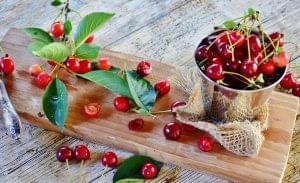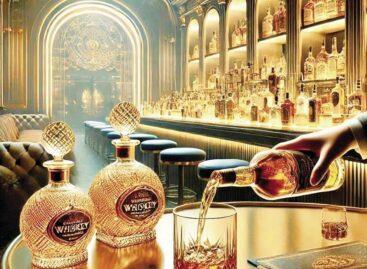Hungarian sour cherries in unprecedented crisis: the fruit could become a luxury item
The Hungarian fruit market, especially the sour cherry sector, has reached a historic low, characterised by record low yields, depleted stocks and skyrocketing prices. According to Index, the price of sour cherries for processing has risen from the previous 200–300 forints/kilogram to 600–700 forints, meaning that the once affordable fruit could easily become a luxury item, writes Index.
Dramatic situation for processors
 Szilárd Schmidt, the head of one of the country’s largest frozen fruit processors in Berkenye, Nógrád County, said: he has not seen such a crisis in the fruit market in the past 18 years. Ferenc Apáti, the president and CEO of FruitVeB, made a similar statement, saying that the price and availability of sour cherries are posing unprecedented challenges for the entire sector.
Szilárd Schmidt, the head of one of the country’s largest frozen fruit processors in Berkenye, Nógrád County, said: he has not seen such a crisis in the fruit market in the past 18 years. Ferenc Apáti, the president and CEO of FruitVeB, made a similar statement, saying that the price and availability of sour cherries are posing unprecedented challenges for the entire sector.
Unprecedented demand – with zero inventory
According to FruitVeB, this year’s sour cherry harvest is expected to be just 35,000 tons – not only is this below the 60,000–70,000 tons of good vintages, but it is also nowhere near last year’s otherwise weak 51,000 tons. According to Ferenc Apáti, the real quantity may not even reach 30,000 tons. Meanwhile, the warehouses of processors are practically empty, and demand has increased extremely from almost every European country.
Frost has settled, the market is shaking
The reason for the crop failure is the Arctic cooling in April: the cold wave started in Poland and then swept through Hungary, Serbia and Bulgaria. The flowering fruit trees suffered severe damage, with temperatures as low as minus 10 degrees Celsius in several places. For example, only a 30% yield is expected for the early, high-yielding varieties from Érd.
Frost protection for millions
The Berkenyei Cold Storage used wind turbines and heating to protect against frost damage: frost protection for a 5-hectare plantation costs 25–30 million forints, with a daily operating cost of 200 thousand forints. In the case of apples, heating systems powered by diesel were even deployed. Thanks to the intensive protection, the average yield on the Berkenyei plantations can reach 60–70%, while the areas with heated wind turbines show a full harvest. According to Szilárd Schmidt, it would be worthwhile to establish new plantations in higher, more frost-protected areas in the future – although this does not guarantee complete safety either.
Demand is driving up the price, but for how long?
Intensive demand is expected for sour cherries, especially from Poland, but all major European producers are actively looking for raw materials. Export markets offer prices 10-20% higher than domestic buyers, which puts the Hungarian market under serious pressure. Berkenyei Hűtőház aims to keep at least a third of its production domestically, but Schmidt says caution is needed: “There have been examples with raspberries and elderberries where demand has halved after prices tripled.”
Related news
Fodder fruit sold as a premium: double quality in Romania, reputational risk in the region
🎧 Hallgasd a cikket: Lejátszás Szünet Folytatás Leállítás Nyelv: Auto…
Read more >The taste of luxury
🎧 Hallgasd a cikket: Lejátszás Szünet Folytatás Leállítás Nyelv: Auto…
Read more >Two-thirds of adults don’t eat enough vegetables and fruits
🎧 Hallgasd a cikket: Lejátszás Szünet Folytatás Leállítás Nyelv: Auto…
Read more >Related news
New Year’s Eve: shortened opening hours in stores – general store closure on January 1
🎧 Hallgasd a cikket: Lejátszás Szünet Folytatás Leállítás Nyelv: Auto…
Read more >Tejföl is only a name for live flora: new categories for sour dairy products will be introduced from 2026
🎧 Hallgasd a cikket: Lejátszás Szünet Folytatás Leállítás Nyelv: Auto…
Read more >Sausage prices before New Year’s Eve: cheap entry, expensive premium – how big is the gap on the shelves?
🎧 Hallgasd a cikket: Lejátszás Szünet Folytatás Leállítás Nyelv: Auto…
Read more >






